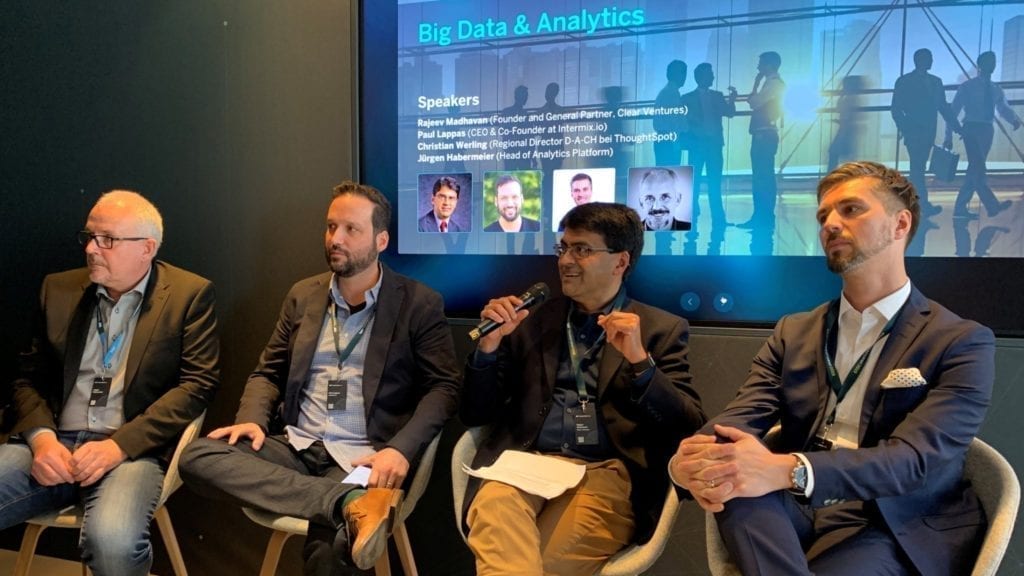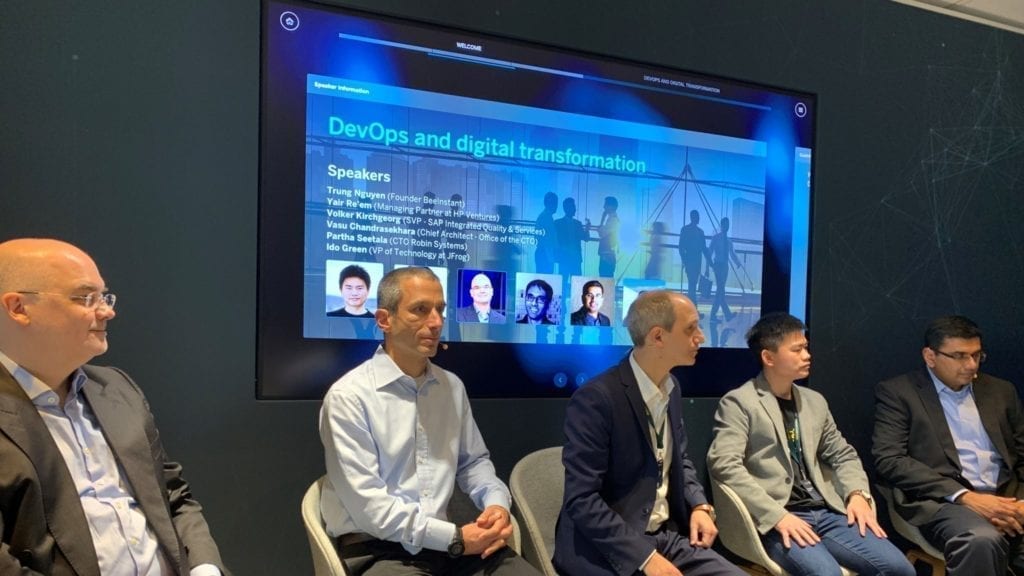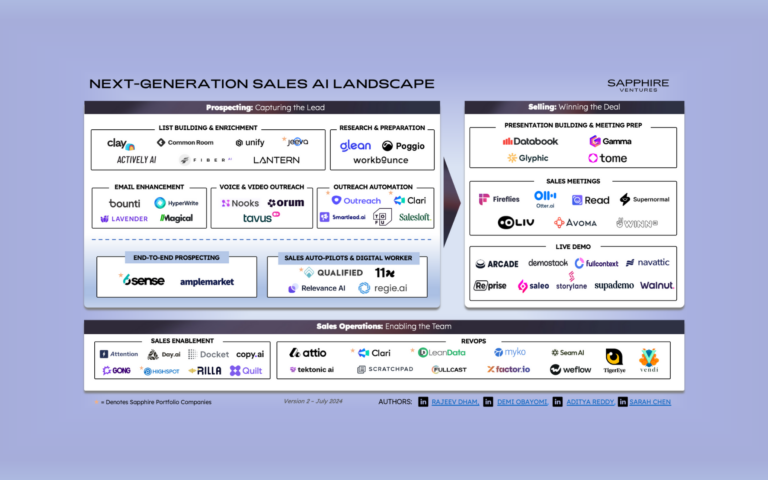Emerging technology and high-growth, expansion-stage startups play an important role in creating value in the digital transformation to an intelligent enterprise. That was a key takeaway from the discussions at Transform!2019, an event hosted by the enterprise application leader SAP last month, for an audience of startup executives, enterprise IT leaders and other industry experts to explore how enterprises are managing their digital transformation.
With the recent expansion of Sapphire Ventures’ Portfolio Growth business development team in Europe and our access Silicon Valley innovation, Sapphire Ventures was asked to participate in Transform!2019 and bring some of our portfolio companies into the conversation to help IT executives better understand the startup ecosystem. Executives from Sapphire portfolio companies JFrog, Contentful and Thoughtspot helped spark these two themes that developed throughout the event:
The Explosive Growth of Data Continues
The 21st century has been called the Information Age, and compared to other global resources, we won’t be running out of information any time soon. According to Christian Werling of ThoughtSpot, various experts estimate the size of the digital universe will double every 18 months, a 50-fold growth from 2010 to 2020. Human- and machine or IoT data is experiencing an 10x faster growth rate than traditional business data, and IoT generated data is increasing even more rapidly.
It’s no surprise that with this growth, modern enterprises can easily be overwhelmed by the sheer volume of data, making the ability to store, process, analyze, interpret, consume, and act a primary issue to future enterprise vale. The pivotal question in the analytics and business intelligence space remains: how to transform raw data into actionable insight?
Christian Werling, Regional Director DACH at ThoughtSpot, a business intelligence and big data analytics company, posed a thought-provoking question for the group: “Why not integrate a next-generation analytics platform with your back-end, systems of records so that business people can use Google-like search to easily analyze complex, large-scale enterprise data and get trusted insights to questions they didn’t know to ask?”
Relational search and augmented analytics are two such new approaches designed for searching and analyzing company data – whether that be financial, marketing, sales, supply chain, and other business data sources. That’s because for most global enterprises, data usually exists in multiple silos and systems distributed around the world. A relational search engine needs to crawl all these data sources, correctly identify the relationships, and enable everyone in the business to search and analyze the data relevant to them. But to be successful at the employee level, all this must be done without losing the instant gratification people have come to expect from a consumer search engine, like Google.

Similarly, a true augmented analytics system helps business users to ask questions they never thought to ask because of the complexity of getting to the answer. Practically, that means augmented analytics requires: no advance knowledge about the underlying data is needed, nor lengthy transactions to click. Thanks to sophisticated algorithms and a scalable architecture these augmented systems are helping enterprises find rare “golden nuggets” of information across an otherwise impossible ocean of data.
The Impact of DevOps and Continuous Innovation on Digital Transformation
DevOps is not necessarily a category you would immediately associate with enterprise digital transformation, but its focus on continuous planning, development, release of software is significantly impacting companies.
Transform!2019 featured a panel on DevOps and Digital Transformation hosted by Yair Re’em consisting of Ido Green, Partha Seetala, Vasu Chandrasekhara, Volker Kirchgeorg, and Trung Nguyen who talked about DevOps best practices and the past, the present and future of DevOps.
When it comes to creating a business that can thrive in the digital age, the benefits of DevOps are clear: faster deployment frequency and lower failure rates are proven advantages. Monthly, weekly and sometimes even daily release cycles in the Cloud, bring more velocity to software organization, enabling more value, faster to your users.
A good part of the discussion was on the adoption trends for DevOps, challenges it can create in the transformative journey, and best practices for implementing DevOps.
One of the central issues Ido Green from JFrog, a developer-centric software distribution platform provider, addressed was about security and how it can be an impediment for DevOps adoption. What should be the trade-off in DevOps Solutions between velocity and security?

Ido believes that there should be no trade off sacrificing velocity. He believes enterprises need to bake security into your DevOps in a helpful, not hindering, way for developers. Companies can achieve this by using tools that implements guardrails, not gates which keeps developers on a paved road without having to spend time working through toll gates.
Ido provided the audience with these additional tips on DevOps tools:
- Velocity: use an automated tool that suggests solutions and not just ‘FYI’ information. Moreover, the tool should secure the pipeline from the development phase all the way to deployment, and later, monitoring everything that is in production. Look for tools that minimize false-positive alerts, so your developers gain trust in the tool.
- Security: your tools should have a wide coverage of vulnerabilities (think beyond NVD – National Vulnerability Database). They should have a way to integrate with IDEs (Integrated Development Environment) so your developers are aware of risks while building the software. Last but not least, your developers need a tool that not only tells you what is wrong but also provides a clear path to remediation (i.e. precise matching between vulnerabilities and packages and offer the ones that are fixed).
The group agreed that there is likely no single solution that answers all of a company’s needs. Each company will have different priorities and gaps that need to be addressed as they focus on: Innovation, security and cost reduction.
Here is what the group recommended looking at for each of these priorities:
- Innovation: It’s a critical success factor for any company that wishes to boost progress and keep improving its product. The speed that you gain from DevOps best practices helps you increase the possibilities to build more innovative services.
- Security: it is important to be able to find vulnerabilities as soon as possible in the development cycle and later mitigate them as fast as you can. A great DevSecOps ability is therefore critical.
- Cost: DevOps helps reduce costs (finding bugs as early as possible and/or removing vulnerabilities from production). It is also a leverage point to your internal development team as they can reach users faster/better/cheaper.
The Future of the Intelligent Enterprise
All industries have a lot to think about on their path to becoming an intelligent enterprise. Emerging technologies, whether in the form of a new solutions like augmented analytics, or a fundamental rethinking of their software development process through DevOps, can play an important role in their continued growth. Sapphire Ventures looks forward to helping IT leaders navigate the shifting landscape through events like Transform!2019 or our online SV Explorer platform to keep CIOs connected with new technologies and vendors.
Many thanks to Ido Green (JFrog) and Christian Werling (ThoughtSpot) for contributing to this article, and the conversation at Transform!2019.



